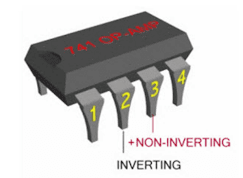Analog and Digital Instruments
What are Analog Instruments?
The signals which continuously vary and take infinite values for a given range are called analog signals and the instrument that displays analog signals is known as analog instruments. In analog instruments, the signals or functions vary continuously.
Examples of analog instruments are DC potentiometer, PMMC ammeter, PMMC voltmeter, DC ammeter, DC voltmeter, whetstone meter bridge, etc.
What are Digital Instruments?
The signals which vary in discrete steps and take a finite different value in the given range are called digital signals and the instrument that displays digital signals is called a digital instrument.
Examples of digital instruments are microprocessor-based instruments, logical analyzers, signature analyzers, computers, digital counters, etc.
Comparison Between Analog and Digital Instruments (Analog Instruments Vs Digital Instruments)
Comparison between analog and digital instruments are discussed in the below table.
|
Parameter |
Analog
Instrument |
Digital
Instrument |
|
Principle |
The
analog instruments display analog signals. |
The
digital instruments display digital signals. |
|
Accuracy |
Less
compared to digital instruments. |
More
compared to analog instruments. |
|
Resolution |
Less
compared to digital instruments. They can be made with a resolution of a one-part
in several hundred. |
More
compared to analog instruments. They can be made with a resolution of one part
of several thousand. |
|
Observational
errors |
Analog
instruments have considerable observational errors. |
Digital
instruments are completely free of observational errors. |
|
Power
required |
More
power is required compared to analog instruments. |
Very
negligible power required. |
|
Portability |
The
analog instruments are portable. They can be moved easily from one location
to another location. |
The
digital instruments are not portable. However, the modern development of digital
instruments is extremely portable and cheap. |
|
Cost |
Analog
instruments are cheap. |
Digital
instruments are expensive. |
|
Examples |
DC
ammeter, DC voltmeter, DC potentiometer, PMMC ammeter, PMMC voltmeter, etc. |
Microprocessor-based instruments, logical analyzers, signature analyzers, computers, digital counters, etc. |
 |
| Analog Voltmeter Vs Digital Voltmeter |
Advantages of Digital Instruments Over Analog Instruments
Some of the advantages of digital instruments over analog instruments are given below.
- The output of the digital instruments is in digital form. Therefore, the output can be given to computers, printers, counters, floppy disks, etc.
- The readings are indicated in decimal numbers. Thus, errors of reading on scale i.e., observational errors can be minimized.
- The power required to operate digital instruments is small as compared to analog instruments.
- The readings of the digital instruments can be carried up to one number of significant digits by placing the decimal numbers. Hence, accuracy can be increased.


























